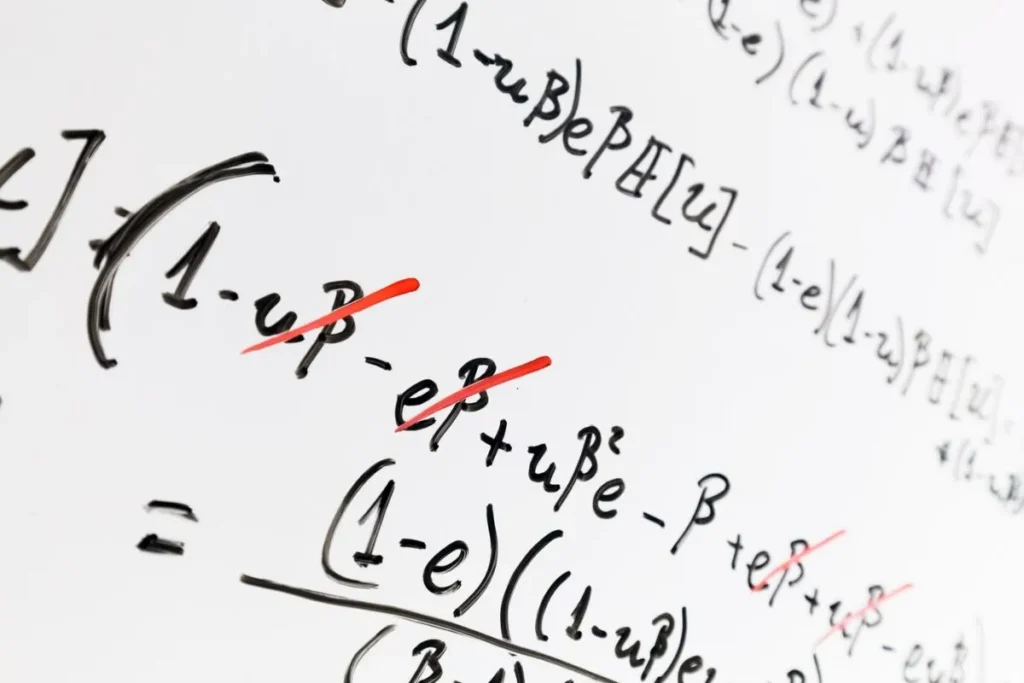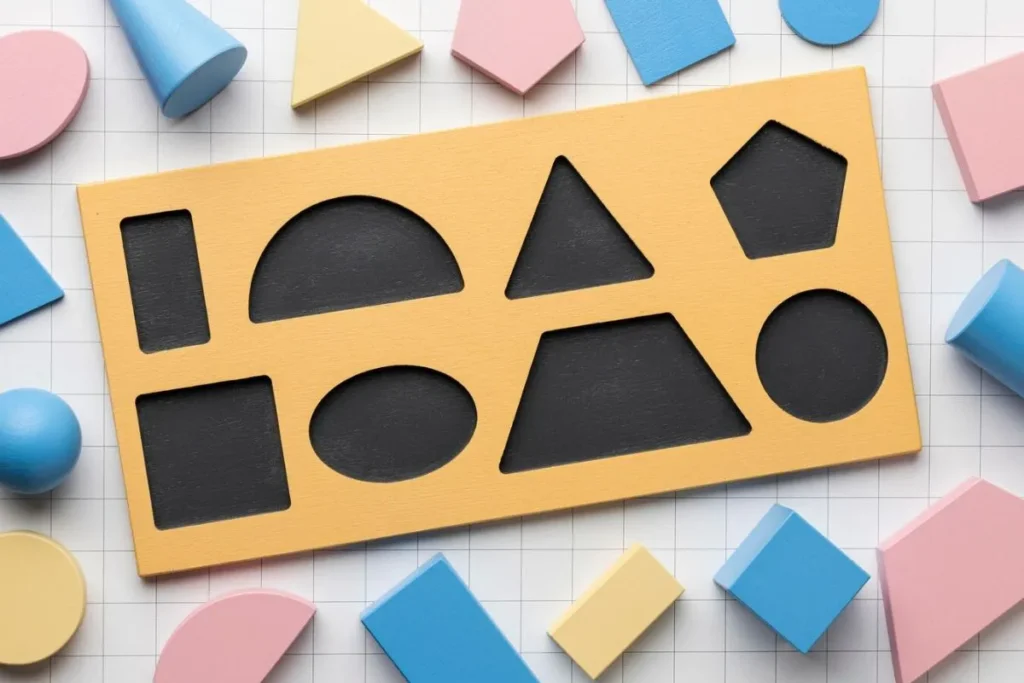Fractal Geometry in Painting Techniques explores the fusion of mathematical principles with artistic expression. Artists leverage fractals to create visually stimulating patterns. This integration enhances both aesthetic appeal and depth.
Applying fractal geometry in visual arts isn’t new. It has been gaining traction for its unique aesthetic properties. The captivating patterns rooted in math resonate within the realm of abstract art.
This article delves into the fundamentals of fractal geometry, its applications in painting, and its multidimensional benefits. Explore how math art transforms visual representation.
Understanding Fractal Geometry
Fractal Geometry involves complex geometric patterns repeating at various scales. Each small component is a microcosm of the whole. This concept is known as self-similarity.
Fractal patterns are pervasive in nature. For example, trees, coastlines, and mountain ranges exhibit fractal properties. They share similar visual characteristics regardless of scale.
The term ‘fractal’ was coined by Benoît B. Mandelbrot in 1975. It represents a bridge between the abstract world of mathematics and tangible reality. Fractals appeal to both scientific and artistic communities.
Key Elements of Fractal Geometry
The concept of self-similarity is central to fractal geometry. Self-similar structures repeat their shape at different scales, creating intricate patterns.
Fractal dimension measures the complexity of a fractal. It delves beyond traditional Euclidean dimensions. For example, the fractal dimension of a coastline can be non-integer, suggesting its inherent complexity.
Visual representation of fractals helps in understanding their intrinsic order. Artists often employ computer algorithms to generate fractal patterns. These patterns become the foundation for their artwork.
Fractal Geometry in Painting Techniques
Integrating Fractal Geometry in Painting Techniques offers a fusion of technical precision and creative expression. Fractal patterns can be used to create both abstract and geometric art styles.
Artists like Jackson Pollock have utilized fractal concepts unknowingly. Jackson Pollock’s action paintings exhibit fractal patterns when analyzed mathematically. This highlights the intuitive connection between human creativity and mathematical order.
Additionally, modern technologies enable artists to manipulate fractal algorithms. These algorithms can generate intricate patterns that serve as blueprints for original artwork.
Self-Similarity in Art
The implementation of self-similar patterns creates coherence within artwork. It allows for the replication of a motif across various scales, ensuring harmonious visual composition.
For example, creating a background with self-similar patterns can provide texture. Subsequent layers of the painting can then utilize these patterns to add depth and complexity.
This fractal coherence enhances the viewer’s experience. It adds layers of visual interest and invites deeper engagement with the artwork.
Employing Fractal Dimension in Painting
Artists can employ the concept of fractal dimension to develop complex, multi-dimensional compositions. Higher fractal dimensions suggest more intricate detail.
By varying fractal dimensions throughout a piece, artists control visual complexity. This technique can guide viewers’ attention organically, without overt direction.
Using fractal dimension purposefully allows the artist to balance detail and simplicity. This balance maintains aesthetic appeal while conveying complexity.
Benefits of Incorporating Fractal Geometry
Utilizing Fractal Geometry in Painting Techniques offers numerous benefits. It adds a unique edge to artistic projects while enhancing visual interest and coherence.
Fractals also have psychological benefits. Human brains are naturally inclined to find fractal patterns pleasing due to their connection to nature. This intrinsic appeal can make fractal-based art more engaging.
Additionally, fractal geometry in art can be a tool for innovation. It encourages artists to explore new realms of creativity, blending algorithms with intuition.
Psychological Appeal of Fractals
The intricate patterns and repetition in fractals mimic natural formations. This connection can evoke a sense of familiarity and comfort in viewers.
Studies in psychology show that fractal patterns in art reduce stress. This makes them particularly appealing in therapeutic settings or places designed for relaxation.
This innate preference for fractals ensures that artworks utilizing these patterns resonate on a deeper cognitive level. The connection with nature adds an extra dimension to artistic expression.
Innovation through Fractal Geometry
Artists experimenting with fractal geometry often create groundbreaking works. This exploration combines mathematical rigor with creative freedom.
Digital tools facilitate this intersection. Artists can now manipulate fractal algorithms easily, experimenting with forms that would be difficult to achieve manually.
This marriage of technology and art exemplifies the innovative potential of fractal geometry. It encourages artists to venture into uncharted creative territories.
Enhancing Visual Coherence
Fractal patterns naturally enhance visual coherence. They imbue the artwork with a system of order, balancing chaos and structure.
This balance is especially useful in abstract art, where the absence of traditional forms can lead to visual disarray. Fractals provide an underlying framework that unites diverse elements.
The result is a visually appealing, harmonious composition that captivates viewers. This coherence aligns with the human brain’s affinity for pattern recognition, resulting in a more engaging experience.
Tools and Techniques for Creating Fractal Art
To integrate Fractal Geometry in Painting Techniques, artists can leverage various tools and software. These technologies simplify the creation of intricate fractal patterns.
Programs like Apophysis, Mandelbulb 3D, and Ultra Fractal are popular. They offer user-friendly interfaces for generating fractals, suitable for artists of all skill levels.
These tools enable artists to focus on creativity without being bogged down by technicalities. They provide a platform for experimenting with fractal patterns and evolving techniques.
Manual Techniques for Fractal Art
While digital tools are invaluable, some artists prefer manual methods. Techniques like stippling, splattering, and layering can mimic fractal properties.
For example, creating a splash painting with repeating patterns can echo fractal self-similarity. This method blends control with randomness, a hallmark of fractal design.
Understanding the underlying principles of fractal geometry is crucial. It helps artists apply these techniques more effectively, even when working manually.
Digital Tools for Fractal Patterns
Digital tools offer precision and repeatability. Artists can manipulate parameters to achieve desired complexity and variation in fractal designs.
- Apophysis: Ideal for creating flame fractals with elegant, flowing patterns.
- Mandelbulb 3D: Facilitates the creation of three-dimensional fractal landscapes.
- Ultra Fractal: Known for its extensive customization and user-friendly interface.
These programs allow artists to iterate quickly, refining their designs. They also enable the exploration of three-dimensional fractal spaces, broadening artistic horizons.
Real-World Applications
The integration of Fractal Geometry in Painting Techniques has implications beyond fine art. It influences fields like architecture, graphic design, and virtual reality.
Architects use fractal principles for structurally efficient and aesthetically pleasing designs. Buildings like the Sagrada Familia in Barcelona exhibit fractal-like patterns.
Graphic designers incorporate fractals to create compelling visuals for marketing and branding. The resulting designs stand out due to their intricate detail and consistency.
Fractals in Architecture
Architectural designs often leverage fractal patterns for visual and structural benefits. These designs mimic natural efficiency and aesthetic harmony.
The Sagrada Familia is a prime example. Its complex facades and intricate details mirror natural fractal forms, creating both visual appeal and structural strength.
Modern architects continue to explore this intersection, designing buildings that blend functionality and beauty through fractal geometry.
Fractals in Graphic Design
In graphic design, fractal patterns offer a dynamic way to capture attention. They are used in logos, advertisements, and user interfaces.
The complexity and self-similarity of fractals make designs more memorable. Viewers are drawn to the patterns, which often convey a sense of depth and consistency.
This visual appeal can enhance brand recognition and engagement, making fractals a valuable element in a designer’s toolkit.
Fractals in Virtual Reality
Virtual reality (VR) environments benefit immensely from fractal geometry. Fractals add realism and immersion to VR landscapes, making them more engaging.
Designers create realistic terrains and structures using fractal algorithms. These detailed environments make virtual experiences more compelling and authentic.
The use of fractal geometry in VR exemplifies the blend of art and technology, pushing the boundaries of digital engagement.
Broader Implications
The incorporation of Fractal Geometry in Painting Techniques extends beyond visual arts. It touches on cognitive science, psychology, and even environmental design.
Cognitive scientists study the interaction of fractals with human perception. They explore how these patterns enhance focus and mental well-being.
In environmental design, fractal patterns contribute to creating spaces that promote tranquility and recovery, leveraging the inherent human preference for natural forms.
Cognitive Science
Fractals capture attention due to their complexity and order. Cognitive scientists examine how this affects mental processes like attention span and stress reduction.
Environments designed with fractal elements can boost cognitive performance. They provide visual stimuli that align with the brain’s natural inclinations.
Integrating fractals into educational and workspaces can enhance productivity and well-being, demonstrating the broader impact of these patterns.
Environmental Design
Incorporating fractals into environmental design enhances aesthetic and psychological well-being. Spaces with fractal patterns feel more natural and inviting.
This approach is especially effective in therapeutic settings, where reducing stress is crucial. Patients often find fractal-rich environments soothing and conducive to recovery.
Designers and architects utilize these insights to craft spaces that resonate positively with human psychology, making environments more harmonious and effective.
Summing Up the Potential of Fractal Geometry
Fractal Geometry in Painting Techniques merges mathematical precision with artistic creativity. This intersection enriches both visual appeal and cognitive engagement.
From abstract and geometric art to real-world applications in architecture and VR, fractals offer multifaceted benefits. Their visual appeal is deeply rooted in human psychology, making them effective across various fields.
Artists and designers utilizing fractal geometry unlock new levels of innovation. They blend the natural world’s complexity with human creativity, resulting in compelling and timeless works of art.
Discover the realm of fractal geometry and see how it transforms art and design. Unleash your creativity and explore the endless possibilities of fractal patterns.
Frequently Asked Questions
What is fractal geometry?
Fractal geometry involves complex patterns that repeat at different scales. Each segment mirrors the whole, creating intricate designs known as self-similarity.
How do fractals benefit cognitive science?
Fractals enhance cognitive processes by aligning with the brain’s preference for natural patterns. They can improve focus, reduce stress, and boost overall mental well-being.
Can fractal patterns be created manually?
Yes, artists can create fractal patterns manually using techniques like stippling and splattering. Mastering these methods requires an understanding of fractal principles.
What tools are used for digital fractal art?
Popular tools include Apophysis, Mandelbulb 3D, and Ultra Fractal. These programs allow artists to generate and manipulate fractal patterns with precision.
Why are fractals appealing in art and design?
Fractals resonate with the human brain’s appreciation for natural patterns. Their complexity and coherence make designs more engaging and memorable.




